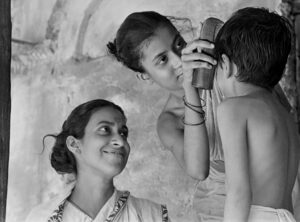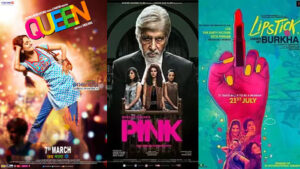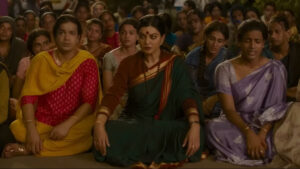The history of Indian cinema has progressed through distinct epochs, growing from silent films to the Golden Age and ultimately to the emergence of Bollywood. In India, movies are a massive deal, not only for locals but also for film enthusiasts globally. The big screen has a universal charm that captivates people of all ages and backgrounds, whether they’re into mushy romances, hardcore action, drama or mind-bending fiction. India’s film scene is a mixed bag, reflecting the crazy diversity in our culture and regions. You’ve got the Bollywood glitz stealing the spotlight, and then there’s the awesome vibe of Tollywood, Pollywood, and Kollywood, each bringing its own unique style to the table.
In India, movies serve as more than simply amusement; they’re like narratives depicting our cultural heritage. They tackle everything from gender issues to caste problems, religion, and the economic divide. Filmmakers aren’t hesitant to stir things up, question accepted wisdom, and advocate for constructive change. It’s more than just viewing movies; it’s about taking in our society’s pulse via the prism. Indian Cinema has had a long and rich journey which has been consistently reinforced through strategic use of folklores and cultural assets. People from different cultures and backgrounds find their stories being reflected through different characters of the movies. Looking at the beginning of cinema, Dadasaheb Phalke’s ‘Raja Harishchandra’ (1913) represented mythological elements. Mehboob Khan’s ‘Mother India’ (1957) and Bimal Roy’s ‘Do Bigha Zamin’ (1953) portrayed rural life, delving into socio-cultural intricacies. Similarly, Satyajit Ray’s ‘Pather Panchali’(1955) provided a glimpse into the life of a Bengali family, presenting a regional point of view. The Kannada classic ‘Naagarahaavu’ (1972) intricately weaves elements from Karnataka’s local folklore, particularly focusing on the culture of snake worship. Meanwhile, in Punjabi cinema, films like ‘Chaar Sahibzaade’(2014) tell the story of Guru Gobind Singh’s sons and their sacrifices, skillfully integrating Sikh folklore into the narrative.  The widespread use of traditional folk songs and dance in Indian cinema has garnered universal appeal, surpassing linguistic and cultural boundaries. Raj Kapoor, often hailed as the first superstar of Indian cinema, achieved international recognition and acclaim for his iconic film, ‘Awara’, particularly in the Soviet Union, earning him the title of a “folk star”. Indian cinema has been profoundly influenced by folk ideas and motifs, particularly in the form of cinematic songs and dances. Notably, Lata Mangeshkar’s compositions, like those in ‘Lekin’ with songs like ‘Yara Sili Sili’ and ‘Kesariya Balama’, demonstrate the use of well-known folk melodies. The smooth incorporation of traditional folk components into cinematic music is evident in these songs, which add to the cultural diversity of Indian cinema.
The widespread use of traditional folk songs and dance in Indian cinema has garnered universal appeal, surpassing linguistic and cultural boundaries. Raj Kapoor, often hailed as the first superstar of Indian cinema, achieved international recognition and acclaim for his iconic film, ‘Awara’, particularly in the Soviet Union, earning him the title of a “folk star”. Indian cinema has been profoundly influenced by folk ideas and motifs, particularly in the form of cinematic songs and dances. Notably, Lata Mangeshkar’s compositions, like those in ‘Lekin’ with songs like ‘Yara Sili Sili’ and ‘Kesariya Balama’, demonstrate the use of well-known folk melodies. The smooth incorporation of traditional folk components into cinematic music is evident in these songs, which add to the cultural diversity of Indian cinema.
Folk has not been limited to music only. The dance numbers in Indian movies eloquently demonstrate the use of folk dances from different cultures. Be it ‘Nimbooda’ from ‘Hum Dil De Chuke Sanam’(1999), Sudha Chandran’s performance on ‘Nache Mayuri’ (1986) or Deepika Padukone’s exemplary performance of ‘Ghoomar’ in the movie ‘Padmaavat’ (2018), choreographers and directors have made sure to bring Indian folk culture forward. Not to forget Shakti Mohan’s performance in ‘Aa Re Pritam Pyare’ was a classic blend of tradition and modernity in Bollywood dance sequences. Similarly, regional cinema has best tried to carry the legacy of folk culture. In ‘Magadheera’ (2009), Kuchipudi dance seamlessly melds with the plot in the song ‘Jorsey’, while ‘Paruthiveeran’ (2007) authentically captures the rural ambiance with the inclusion of Karakattam in ‘Oororam Puliyamaram’. Both films adeptly merge dance forms into their narratives, adding cultural richness.

Movies are like time machines, right? They whisk us away to different eras and let us rub shoulders with historical heavyweights. Take ‘Manikarnika: The Queen of Jhansi’ ‘Mughal-E-Azam’, ‘Kesari’ and ‘Bhaag Milkha Bhaag’ – they throw us right into the heart of historical tales, making the past come alive on the big screen. But, let’s spill the popcorn too. Not all historical flicks get a thumbs-up for accuracy. Movies like ‘Adipurush’, ‘Padmaavat’, ‘Mohenjo Daro’, ‘Mangal Pandey’ and ‘Rang De Basanti’ have found themselves in hot water being accused of presenting distorted reality.
While we talk about the transformation of cinema, one cannot miss its remarkable evolution in its portrayal of women over the decades. In a country that has witnessed its women in traditional roles such as a mere love interest or a sacrificial mother like in the movie ‘Mother India’, movies such as ‘Guide’ (1965) and ‘Tumhari Sulu’ (2017) offered a fresh perspective with complex female characters who defied conventions. On the other hand, movies like ‘Lipstick Under My Burkha’ (2016) and ‘Veere Di Wedding’ (2018) dive into the whole women’s sexuality thing, spinning stories that were once totally off-limits. In the most contemporary times, the industry witnessed a surge in films with strong female leads, gaining both critical acclaim and commercial success. ‘Raazi’ showcased Alia Bhatt as a resilient spy, ‘Queen’ empowered Kangana Ranaut’s character through self-discovery, and ‘Thappad’ with Taapsee Pannu, addressed issues of marital dynamics and women’s agency. Regional cinema stands out with notable examples too. In Malayalam’s ‘Chemmeen’ (1965), Karuthamma subtly defies societal norms, embodying changing roles in Kerala. Satyajit Ray’s Bengali classic ‘Charulata’(1964) delves into a woman’s intricate journey. Transitioning to Tamil cinema, ‘36 Vayadhinile’(2015) features Jyothika, exemplifying that it’s never too late to pursue dreams amid societal pressures. These films quietly redefine narratives, spotlighting strong women shaping their stories.The change in the film industry reflects evolving cultural perspectives on gender roles as well as a more inclusive and progressive storytelling approach. The success of these movies suggests that there is a need for a variety of storylines, which promotes a more authentic and powerful representation of women in Indian cinema.

Bollywood is no more just about action and romance. Groundbreaking works such as ‘Taali’ (2023), ‘Laxmii’ (2020), and ‘Shubh Mangal Zyada Saavdhan’ (2020) are breaking stereotypes and making sure the third gender gets the limelight and acknowledgement they deserve. Regional cinema, extending beyond Bollywood, is actively advancing diverse gender narratives. In the Malayalam film ‘Theevandi’ (2018), actor Suraj Venjaramoodu portrays a transgender character, adding depth to the broader dialogue on inclusivity. Meanwhile, the Tamil film ‘Super Deluxe’ (2019), starring Vijay Sethupathi as a transgender woman, challenges stereotypes and has earned critical acclaim. These cinematic initiatives, while providing entertainment, also act as agents for social transformation.
There is no doubt that Indian cinema has had an incredible journey. It has not only entertained us but also educated us about culture, history and some hidden realities. What is life without a pinch of cinema and drama in it? Bollywood isn’t just movies; it’s like this major influencer in our lives. Think about it – those epic dialogues, timeless tunes – they’re everywhere in our chats and parties. Those movie characters are not just mere characters but are a reflection of ourselves, our heroes and ideals. One cannot disagree that with the advent of the digital revolution of cinema and rise of OTT platforms, content specific to cultures, regions and languages has grown manifold. It’s like a storytelling buffet where everyone gets a seat at the table. Netflix, Amazon Prime, and their pals aren’t just streaming services; they’re cultural ambassadors, letting us binge on stories that might have stayed hidden in the shadows. In the grand tapestry of life, Indian cinema stands as a vibrant thread, weaving together folktales and stories that echo through generations.

